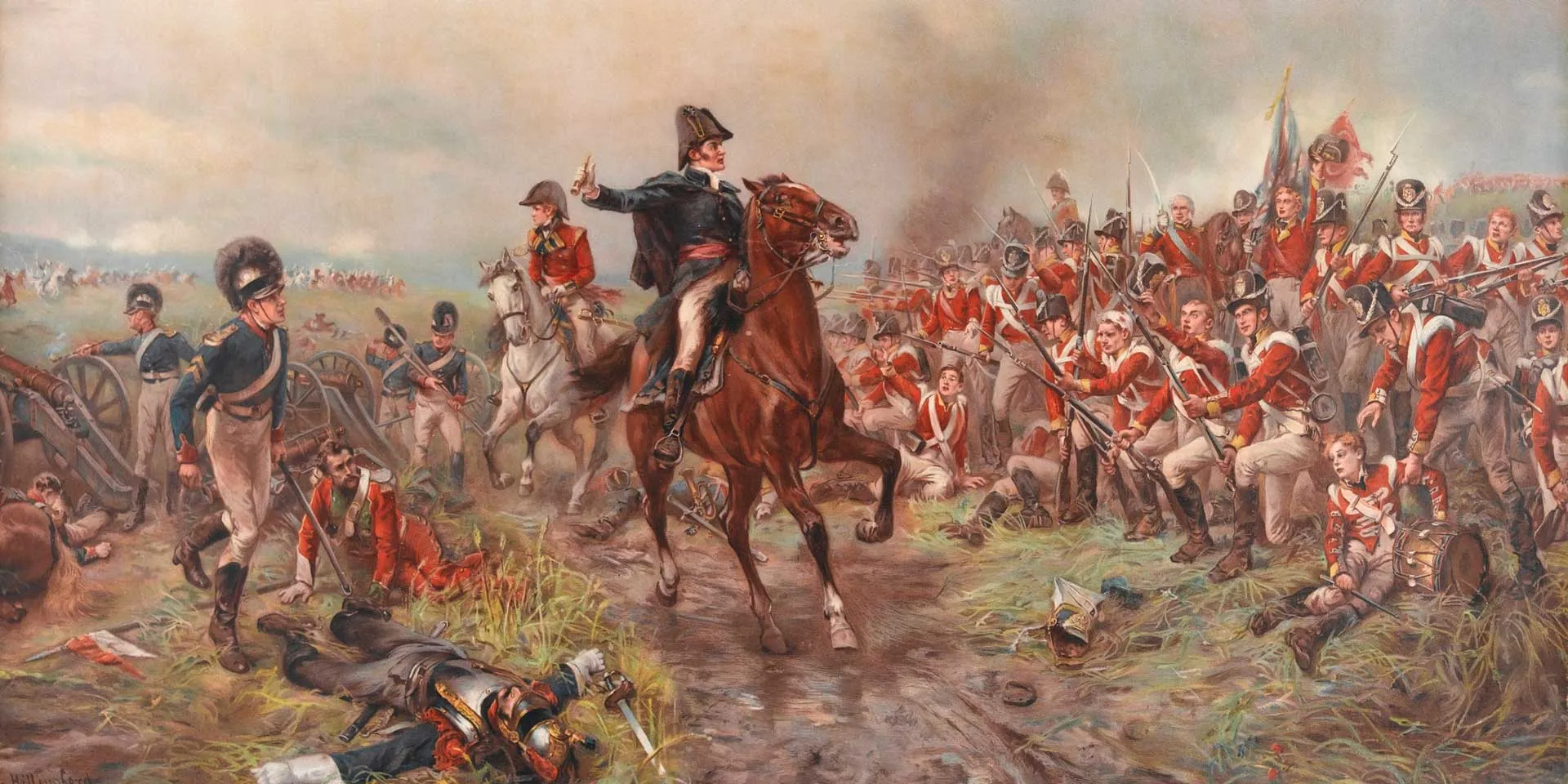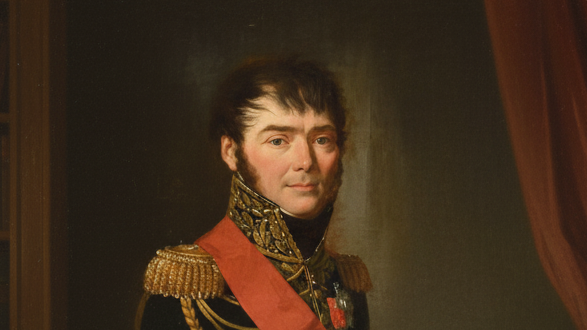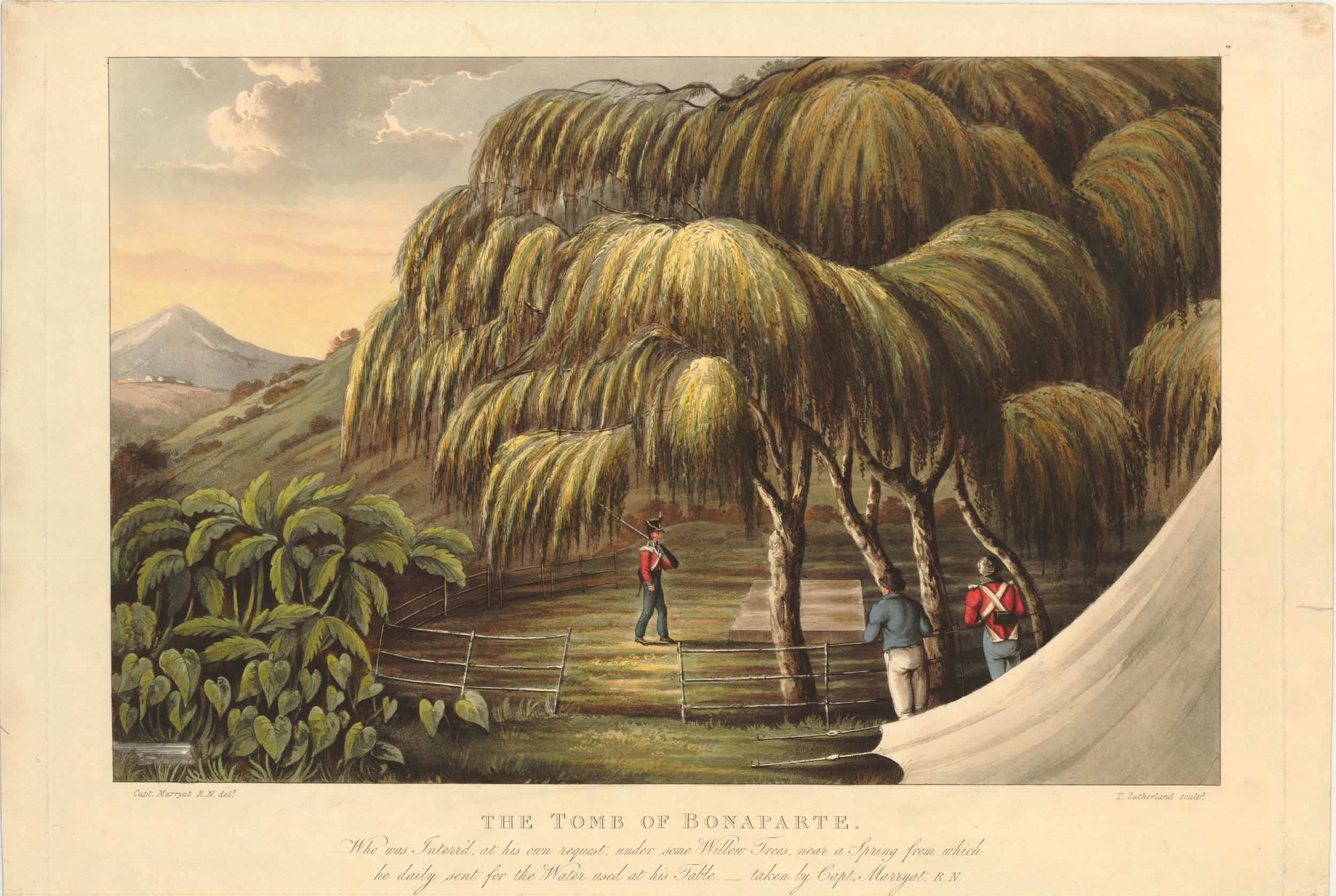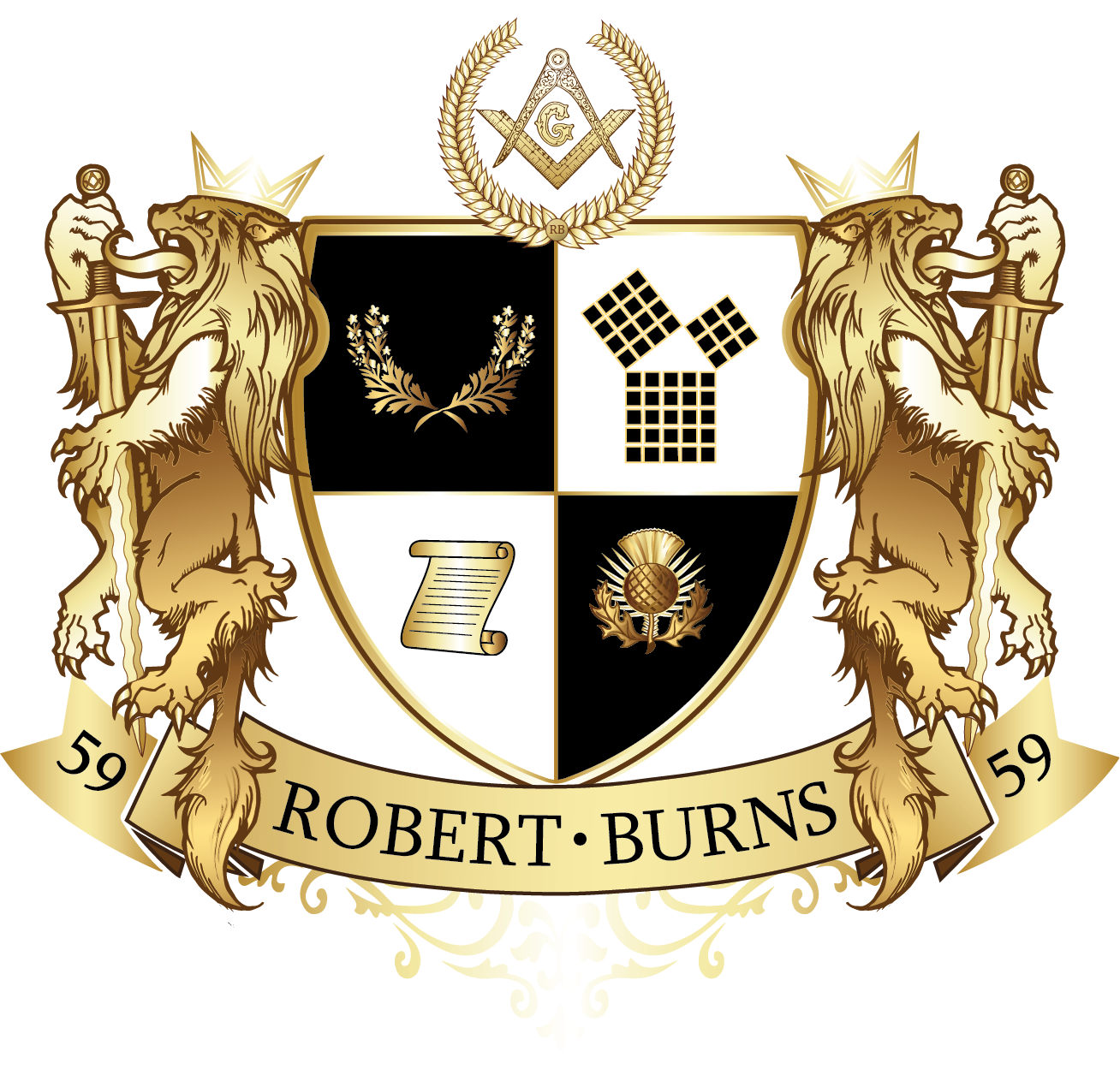The Order of the French Noachite
Ordre des Noachites Français
The Order of the French Noachites (Ordre des Noachites Français), also identified in Masonic encyclopedias as "Napoleonic Free-Masonry," was a clandestine, specialized political organization founded in Paris in 1816. It was established by former Bonapartists in the immediate aftermath of Napoleon's final defeat and the subsequent Bourbon Restoration. The Order's primary raison d'être was to function as a "memory community," utilizing the secretive structure and allegorical language of a Masonic rite to "secretly memorialize Napoleon" and sustain a veiled Bonapartist political culture in the face of state repression.
This 1816 Order must be rigorously distinguished from a pre-existing and still-active Masonic degree with which it is frequently confused: the "Noachite, or Prussian Knight" (Noachite ou Chevalier Prussien). This latter entity is the 21st Degree of the Ancient and Accepted Scottish Rite (AASR) and possesses a wholly different origin (c. 1757), legend (the Tower of Babel), and symbolism (the full moon, a triangle traversed by an arrow).
The Bonapartist founders' choice of the "Noachite" name was a deliberate and symbolic act of political dissent. Mainstream French Masonic bodies, such as the Grand Orient de France, were being suppressed or forced into apolitical stances by the new Bourbon government. The pre-existing AASR 21st Degree had already established a symbolic dichotomy between "Hiramites" (disciples of Hiram Abif, representing mainstream Masonry) and "Noachites" (an alternative lineage from Noah and Peleg). By adopting the "Noachite" moniker, the 1816 founders were co-opting this "alternative" Masonic lineage. It served as a symbolic declaration of secession from the compromised "Hiramite" establishment that had capitulated to Louis XVIII, allowing the Bonapartists to frame their dissent as a legitimate, parallel tradition.
We will discover the precise political and esoteric context that necessitated the Order's creation. It will first deconstruct the "Noachite" terminology to resolve this central ambiguity. It will then analyze the 1816 Order's specific founders, its unique three-degree structure, and its coded, hagiographical rituals. Finally, it will trace the Order's demise, linking its dissolution directly to the failure of the 1836 Bonapartist putsch in Strasbourg, which extinguished the political hopes it was created to sustain.

Post-1815 France and the Suppression of Bonapartism
The Legacy of Waterloo and the Bourbon Restoration
The environment that fostered the Order of the French Noachites was the "politically repressive climate" following Napoleon's final defeat at Waterloo in 1815. This event triggered the Second Bourbon Restoration, returning the House of Bourbon to power under King Louis XVIII (reigned 1815–1824) and later Charles X (reigned 1824–1830). This period was not one of reconciliation but of sharp political reaction, marked by a "widespread backlash against Bonapartism" and intense conflicts between reactionary Ultra-royalists and liberals.
The "White Terror" and Clandestine Politics
The Restoration regime immediately sought to dismantle the remnants of the Napoleonic state. This campaign included "large-scale purges of Bonapartists from the government and military". This political purge was accompanied by a "brief 'White Terror'" in 1815, particularly in the south of France, which saw violence against those associated with the former emperor. This state-sanctioned repression effectively forced Bonapartism—a political ideology centered on the restoration of the House of Bonaparte—underground. Its adherents, especially the loyal veterans of Napoleon's Grande Armée, could no longer openly memorialize their fallen leader and were compelled to develop "coded references and symbols" to sustain their community.
The Subjugation of French Free-Masonry
Free-Masonry, which had been a powerful and favored institution under the Empire, was a primary target of the new regime. Napoleon had placed his brother, Joseph Bonaparte, as Grand Master, and numerous Marshals of France were high officers, effectively making the Grand Orient de France a quasi-state apparatus.
The Bourbon government, recognizing this, moved to neutralize this network. According to the historian of French Free-Masonry, Albert Lantoine, Louis XVIII's government initially "shut down" Masonic lodges, fearing they "could be hotbeds of opposition". Lodges were only permitted to gradually reopen under the severe condition that they accepted "apolitical stances". This state-co-option of official Free-Masonry (the "Hiramite" establishment) had a profound and direct organizational consequence. It created a "clandestine vacuum," stripping Bonapartists of their established networks and forcing them to create new, unrecognized, and purpose-built fringe orders. The Ordre des Noachites Français was therefore a direct response, designed specifically to fill the political void that the neutralized Grand Orient de France could no longer occupy.
A Deliberate Obscurity
The name "Noachite" appears in three distinct contexts within Free-Masonry. Understanding the differences between them is essential to isolating the unique character of the 1816 Bonapartist order.
The Foundational Myth, The "Noachite"
The oldest Masonic use of the term is philosophical. It stems from the Charges of a Free-Mason (c. 1723), attributed to James Anderson and Dr. John Theophilus Desaguliers. These charges instruct Masons to adhere to "that religion in which all men agree," a universal moral code identified with the "three great articles of Noah". The "Noachite Legend" posits that this simple, pre-Sinaitic morality was a universal inheritance. Early 18th-century Masonic documents, such as the Krause MS, even obligate Masons to "obey the laws of the Noachites, because they are divine laws". In this original context, "Noachida" (Disciples of Noah) was simply a synonym for a Free-Mason.
The Esoteric Schism: The "Noachite, or Prussian Knight" (AASR 21°)
The second, and most common, use of the title refers to a specific "high degree" that emerged during the 18th-century proliferation of Masonic rites.
- Identity: This degree is the 21st Degree of the Ancient and Accepted Scottish Rite (AASR). It is known interchangeably as "Noachite, or Prussian Knight" (Noachite ou Chevalier Prussien) and "Patriarch Noachite".
- Origin: French rituals date its origin to 1757, alleging it was translated from German by a M. de Beraye. Its adoption is attributed to the "passion for advanced Degrees which prevailed in France in the middle of the eighteenth century".
- Legend: This degree is "totally unconnected" with the standard Masonic legend of Solomon's Temple. Its entire mythology is traced to the Tower of Babel. Its mythical founder is not King Solomon, but Peleg, the chief architect of that edifice.
- Dichotomy: The 21st Degree is foundational to the 1816 Order's name choice because it explicitly creates a symbolic schism. Its initiates call themselves "Noachites" (Disciples of Noah) and pointedly designate all other Free-Masons as "Hiramites" (Disciples of Hiram).
- Philosophy and Symbols: The degree's legend, in which Peleg is humbled, is used to teach "the crime of assumption and the virtue of humility". Its modern core value is Justice. Its symbols are distinct: a black order (ribbon), a yellow apron, and a jewel of a "full moon or a triangle traversed by an arrow". Its meetings are held at night, symbolically lit only by the full moon.
The following table definitively separates these concepts from the 1816 Bonapartist Order.
Disambiguation of 'Noachite' Terms in Esoteric Traditions
| Feature | Order of the French Noachites (1816) | Noachite, or Prussian Knight (AASR 21°) | General Noachite Legend (c. 1723) |
|---|---|---|---|
| Full Title | Ordre des Noachites Français / Napoleonic Free-Masonry | Noachite ou Chevalier Prussien / Patriarch Noachite | "Laws of the Noachites" |
| Origin | Paris, 1816 | France, 1757 (from German sources) | London, c. 1723 (Anderson's Charges) |
| Founders | Defeated Bonapartists; Gen. Bertrand | M. de Beraye (alleged translator) | Dr. John Theophilus Desaguliers / James Anderson |
| Core Legend | The life, death, and "martyrdom" of Napoleon | The destruction of the Tower of Babel; Peleg | The universal moral code of Noah |
| Philosophy | Political memorialization; veiled dissent | Humility vs. assumption; Justice | Universal morality; "Center of Union" |
| Key Symbols | Urn ("ashes of Phaleg"), Willow, Consummatum est | Full moon, triangle with arrow, black ribbon | Dove with olive branch, rainbow |
| Status | Defunct | Active (as 21st Degree AASR) | Active (as a foundational philosophy) |

The Ordre des Noachites Français (1816)
Founding and Founders
The Ordre des Noachites Français was established in Paris in 1816. Its founders were "former Bonapartists" and "companions of Napoleon's glory". Masonic historian Albert Lantoine identifies the primary founder as General Henri-Gatien Bertrand.
Bertrand's identity is central to the Order's purpose. He was one of Napoleon's most loyal aides, serving as the "Grand Marshal of the Palace". His loyalty was absolute: he was one of the few who followed the Emperor into both exiles, first to Elba and subsequently to St. Helena in 1815. Bertrand remained on St. Helena, sharing Napoleon's captivity until the Emperor's death in 1821. In 1840, Bertrand would travel back to St. Helena to accompany Napoleon's remains for their final return to France.

The Paradox of a Founding In Absentia
A significant contradiction emerges from the historical record. The Order was founded in Paris in 1816, yet its principal founder, General Bertrand, was physically on the island of St. Helena from 1815 until 1821. He could not have been present in Paris to organize the Order. This suggests that Bertrand was the Order's symbolic or ideological founder, in absentia. The "companions of glory" still in Paris established the Order in his name. His status as the man physically sharing the Emperor's final exile made him the ultimate living symbol of loyalty. The Order in Paris thus became a "mirror" community, performing coded rituals (detailed in Part IV) about the very events—the exile and "martyrdom"—that their symbolic leader was witnessing firsthand.
The Esoteric Ecosystem of Bonapartism
The 1816 Order was not an isolated creation. It drew "inspiration from the Egyptian Rite," a Masonic order that Napoleon had promoted during his Egyptian campaign. This "Egyptian Free-Masonry" was part of a broader esoteric-military current within Bonapartism.
- The Sacred Order of the Sophisians (1801): Founded in Paris by veterans of Napoleon's 1798–1801 Egyptian campaign. This order, founded by Cuvelier de Trie, explicitly claimed its rituals were derived from "ancient Egyptian mysteries" discovered during the expedition. Its membership included military leaders, scientists, and artists from Napoleon's savants.
- The Rite of Misraim (1814): This 90-degree "Egyptian" rite was brought from Naples to France by the Bédarride brothers, who were officers in Napoleon's Italian army. In the post-1815 climate, it became a known meeting place for "Bonapartists and Republicans" and "opponents to the regime".
The French Noachites' use of this "Egyptian Rite" was a deliberate political affiliation. It was a symbolic code, grounding their new, "heretical" Order in an established esoteric tradition that was inextricably linked to the scientific and military glory of the Napoleonic Empire at its height.
Napoleon as Sacred Allegory
Structure of "Napoleonic Free-Masonry"
The Order was not an elaborate system but a compact, three-degree structure designed for its specific political purpose.
- 1st Degree: Knight
- 2nd Degree: Commander
- 3rd Degree: Grand Elect
This final degree was subdivided into three "points" or inner grades, which likely revealed the Order's true purpose:
- Secret Judge
- Perfect Initiate
- Knight
Decoding the Bonapartist Catechism
The Order's rituals were its entire purpose, "invented" to allow members to "sustain a veiled Bonapartist political culture". The symbols were a "multi-layered" code.
-
Symbol 1: The Urn and the "Ashes of Phaleg"
- Exoteric (Masonic) Meaning: "Phaleg" (or Peleg) is the architect from the Tower of Babel legend, borrowed from the AASR 21st Degree. The ashes would represent this ancient founder.
- Esoteric (Bonapartist) Meaning: The "ashes" were a potent symbol for the living but exiled Napoleon, and later, his actual remains. The ritual, in which initiates carried this urn, "evoked the return of Napoleon's remains from St. Helena"—the very act their spiritual founder, General Bertrand, would complete in 1840.
-
Symbol 2: The Time "Six o'clock less ten minutes"
- Exoteric (Masonic) Meaning: An arbitrary ritualistic time, similar to "high noon" in other degrees.
- Esoteric (Bonapartist) Meaning: This is a hyper-specific coded reference to Napoleon's death. The Emperor died on St. Helena at 5:49 PM on May 5, 1821. "Six o'clock less ten minutes" (5:50 PM) is the ritualistic rounding of this precise moment.
-
Symbol 3: The Phrase Consummatum Est
- Exoteric (Masonic) Meaning: Latin for "It is finished," a common phrase to close a ritual.
- Esoteric (Bonapartist) Meaning: This is the most radical symbol. Consummatum est is the Latin Vulgate phrase for the last words of Jesus Christ on the cross (John 19:30). By applying this phrase, in conjunction with the 5:49 PM time code, to the death of Napoleon, the Order was performing an explicit hagiographical act. This was not mere mourning; it was the canonization of the Emperor. This ritual transformed Napoleon into a secular martyr, sacrificed by his enemies (the Bourbons). It framed his death as a martyrdom, a powerful tool for sustaining the "flame of Bonapartism" by elevating its leader to a sacred, Christ-like status.
-
Symbol 4: Willow Tree Imagery
- Exoteric (Masonic) Meaning: A universal symbol of mourning.
- Esoteric (Bonapartist) Meaning: A specific, almost photographic reference to Napoleon's first grave on St. Helena, which was famously shaded by willow trees. This imagery became iconic of his exile and "reinforced the theme of mourning".

The Coded Catechism of the Ordre des Noachites Français
| Ritualistic Symbol/Phrase | Masonic (Exoteric) Meaning | True (Esoteric) Bonapartist Meaning |
|---|---|---|
| The Urn with "Ashes of Phaleg" | The remains of Peleg, architect of the Tower of Babel (from AASR 21°) | Napoleon's remains, exiled on St. Helena; "evoking the return of Napoleon's remains" |
| "Six o'clock less ten minutes" | A symbolic time for the meeting. | Napoleon's final moments; his death occurred at 5:49 PM |
| Consummatum Est ("It is finished") | A ritualistic closing phrase, denoting completion | The "martyrdom" of Napoleon is complete; a direct reference to the last words of Christ on the cross |
| Willow Tree Imagery | A general symbol of grief and mourning | A specific reference to the willows over Napoleon's grave on St. Helena |
| "Secret Judge" (3rd Degree title) | A Masonic title for an advanced initiate | A political role: to "judge" the illegitimacy of the Bourbon regime and the "treason" against the Emperor. |
The Failed Coup and the Fading Flame
The Enduring Hope (1816-1836)
The Order successfully "sustained the flame of Bonapartism" through the 1820s, a period of continued repression under Louis XVIII and Charles X. The July Revolution of 1830, which ousted the Bourbons, proved a bitter disappointment. It did not restore the Bonapartes but instead installed the "Citizen King," Louis-Philippe d'Orléans. This event frustrated, but did not extinguish, the Bonapartist hopes embodied by the Order.
The 1836 Strasbourg Putsch
The Order's existence was predicated on the hope of a Bonapartist restoration. That hope became personified in Napoleon I's heir, his nephew Louis-Napoléon Bonaparte (the future Napoleon III). In 1836, Louis-Napoléon moved from passive hope to active revolution. He launched an "attempted coup" in Strasbourg, seeking to rally the garrison and replicate his uncle's triumphant 1815 "Flight of the Eagle". The putsch was an "unsuccessful attempt" and a categorical failure, leading to Louis-Napoléon's capture and exile.
The Dissolution of the Order
The research provides a direct causal link between this failed coup and the Order's demise: "with the failure of those hopes after an attempted coup in 1836, the order faded away". This political and military failure was a fatal blow. The Order, which "did not survive," had lost its purpose.
The 1836 coup did not just dash the movement's hopes; it made the Order's function obsolete. The Ordre des Noachites Français was founded by Napoleon I's veterans for a passive purpose: memorialization, hagiography, and the preservation of a spirit. The 1836 coup, by contrast, was led by the next generation for an active purpose: military revolution. The coup's failure proved that the veterans' passive "flame keeping" was insufficient. The center of Bonapartism had irrevocably shifted from the memorial cult of the vieux grognards in their secret lodges to the active political plotting of the new claimant. When that plotting failed so spectacularly, the old rituals were rendered moot, and the flame the Order had sustained for two decades was finally extinguished.
A Case Study in Political Esotericism
The Ordre des Noachites Français (1816-c.1836) was a singular entity in Masonic history, a political cell disguised as a Masonic rite. It must not be conflated with the universalist "Noachite" philosophy of early Free-Masonry or the esoteric "Noachite, or Prussian Knight" (AASR 21°).
It stands as a "fascinating example of Masonic nostalgia", but its true significance is as a case study in applied political esotericism. It demonstrates how the allegorical language, symbolic structures, and inherent secrecy of fringe Masonic bodies can be "invented" and repurposed to serve an immediate, concrete, and politically subversive goal. The Order's rituals were not ancient mysteries but a newly crafted political catechism, designed to transform a defeated Emperor into a sacred martyr, thereby sustaining a "memory community" under the gaze of a repressive state.
The Order's finite lifespan perfectly brackets the first phase of post-Imperial Bonapartism: a movement that began in 1816 with the secret, hagiographical rituals of its loyal veterans and ended in 1836 with the first failed, public putsch of its new heir.
Article By Antony R.B. Augay P∴M∴
